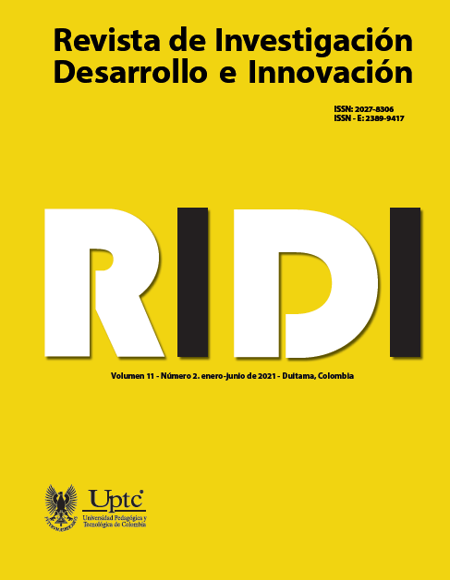Heuristictool, tool for supporting heuristic assessments to interactive systems through ontologies

Abstract
This work presents a tool called HeuristicTool, by means of which the heuristic evaluation process is supported, allowing evaluators to improve the process of analyzing the results and, in general, the development of said evaluations. During its development and permanent updating, ontologies were included to facilitate the capitalization and transfer of knowledge between the different evaluators. The above through KACTUS, a methodology that proposes steps in relation to: the specification of the application, preliminary design based on ontological categories and a refinement and structuring of the ontology. A group of three experts rated 6 ontology variables, consolidating an average of 4.7 out of 5. In addition, an evaluation of the platform's usability presented satisfactory results, using Jakob Nielsen's battery of heuristics. The main result was an application that gives users the possibility of reviewing structured evaluations in a knowledge base, in order to improve decision making.
Keywords
heuristic evaluation;, ontology;, recommendation systems;, usability
Author Biography
Duván Steven Naranjo-Martínez
Ingeniero de Sistemas
César Alberto Collazos-Ordóñez
Ingeniero de Sistemas, Doctor en Ciencias Mención Computación
Royer David Estrada-Esponda
Ingeniero de Sistemas, Magíster en Administración
References
Casado-Martínez, C., Garreta-Domingo, M., Hassan-Montero, Y., Martinez-Normand, L., & Mor-Pera, E. (2011). Interacción persona- ordenador. Recuperado de: https://www.guao.org/sites/default/files/biblioteca/Interacción persona ordenador .pdf
Checkland, P., & Holwell, S. (2005). Data, capta, information and knowledge. In Introducing Information Management: The Business Approach. https://doi.org/10.4324/9780080458397
Estrada-Esponda, R. D., Riascos-Pareja, C. A., & Loaiza-Duque, Á. A. (2018). La interacción humano computador en el currículo de las instituciones de educación superior de Colombia. Revista De Investigación, Desarrollo E Innovación, 9 (1), 147– 162. https://doi.org/10.19053/20278306.v9.n1.2018.7722
Fernández-Garza, E. (2017). Prevención del Síndrome del Túnel Carpiano por el uso de computadoras. https://repositoriotec.tec.ac.cr/handle/2238/9600
García-Toribio, G., Polvo-Saldaña, Y., Hernández-Mora, J. J., Sánchez-Hernández, M. J., Nava-Bautista, H., Collazos-Ordóñez, C. A., & Hurtado-Alegría, J. A. (2019). Medición de la usabilidad del diseño de interfaz de usuario con el método de evaluación heurística: dos casos de estudio. Revista Colombiana de Computación, 20 (1), 23–40. https://doi.org/10.29375/25392115.3605
González, M., Masip-Ardévol, L., Granollers, A., & Oliva, M. (2009). Advances in Engineering Software Quantitative analysis in a heuristic evaluation experiment. Advances in Engineering Software, 40 (12). https://doi.org/10.1016/j.advengsoft.2009.01.027
González, M., Pascual, A., & Lorés, J. (2001). Evaluación Heurística.
Granollers, T., Collazos, C. A., & González, M. P. (2008). The state of HCI in Ibero- American countries. Journal of Universal Computer Science, 14(16), 2599–2613. https://doi.org/10.3217/jucs-014-16-2599
Guzmán-Luna, A., López-Bonilla, M., & Torres, I. (2012). Metodologías y métodos para la construcción de ontologías. 50, 133–140. https://doi.org/http://dx.doi.org/10.22517/23447214.6693
Kemp, E., & Setungamudalige, D. T. (2006). A resource support toolkit (R-IDE): Supporting the DECIDE framework. ACM International Conference Proceeding Series, 158, 61– 65. https://doi.org/10.1145/1152760.1152768
Masip-Ardévol, L. (2010). Análisis de la viabilidad para la automatización de la evaluación heurística. Universidad de Lleida, España. http://hdl.handle.net/10459.1/45842
Naranjo-Martínez, D. (2019). Terminología de la Ontología. HeuristicTool. https://www.heuristictool.com/Terminologia
Riascos-Pareja, C. (2018). Aplicación web para el apoyo de evaluaciones de usabilidad de sistemas interactivos mediante múltiples conjuntos heurísticos (recurso electrónico). Universidad del Valle. https://opac.univalle.edu.co/cgiolib/?infile=authsecsearch.glu&style=authk&nh=20&calling_page=details.glu&key=383166
Sierra-González, J. (2013). Métodos de Evaluación de Usabilidad para Sistemas de Información Web: una revisión. Universidad Nacional de Colombia, 1–13. http://www.bdigital.unal.edu.co/54171/1/m_usabilidad.pdf
Solano, A., Ceron, J. C., Collazos, C. A., & Fardoun, H. M. (2015). ECUSI: Herramienta software para la evaluación colaborativa de la usabilidad de sistemas interactivos. 10th Colombian Computing Conference, 10CCC, 157–163. https://doi.org/10.1109/ColumbianCC.2015.7333418
Suárez-Torrente, M. del C. (2011). Sirius: sistema de evaluación de la usabilidad web orientado al usuario y basado en la determinación de tareas críticas. Universidad de Oviedo. https://dialnet.unirioja.es/servlet/tesis?codigo=22190
Taket, A., Checkland, P., & Holwell, S. (1999). Information, Systems and Information Systems-Making Sense of the Field. The Journal of the Operational Research Society, 50(5). https://doi.org/10.2307/3010006
Walz, D. B., Elam, J. J., & Curtis, B. (1993). Inside a software design team: Knowledge acquisition, sharing, and integration. Communications of the ACM, 36 (10), 63–77. https://doi.org/10.1145/163430.163447
Yáñez-Gómez, R. (2019). Evaluación Heurística de la usabilidad en contextos específicos. Universidad de Sevilla. https://idus.us.es/handle/11441/89691